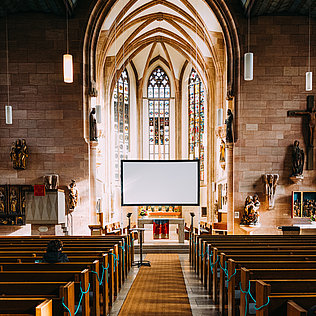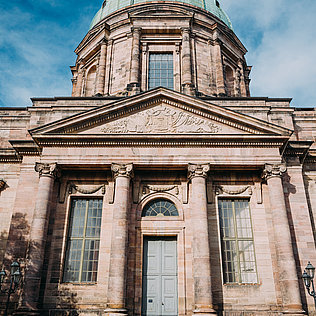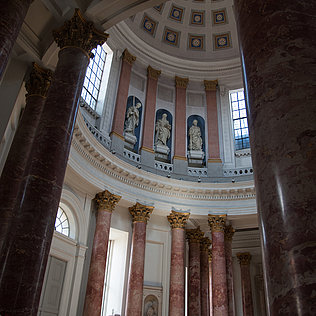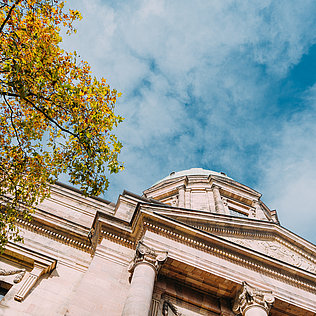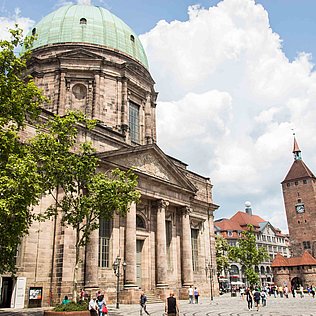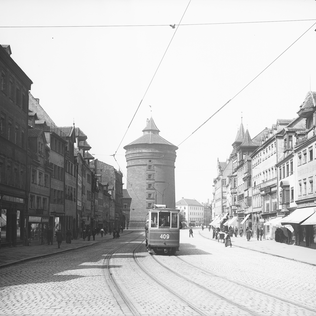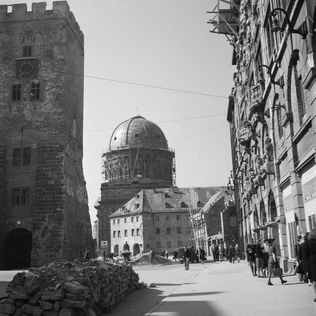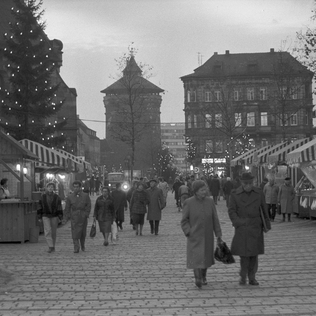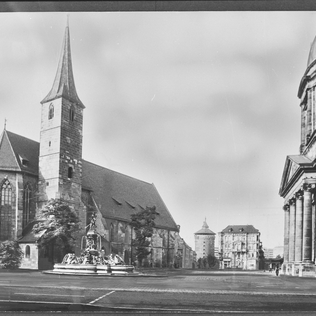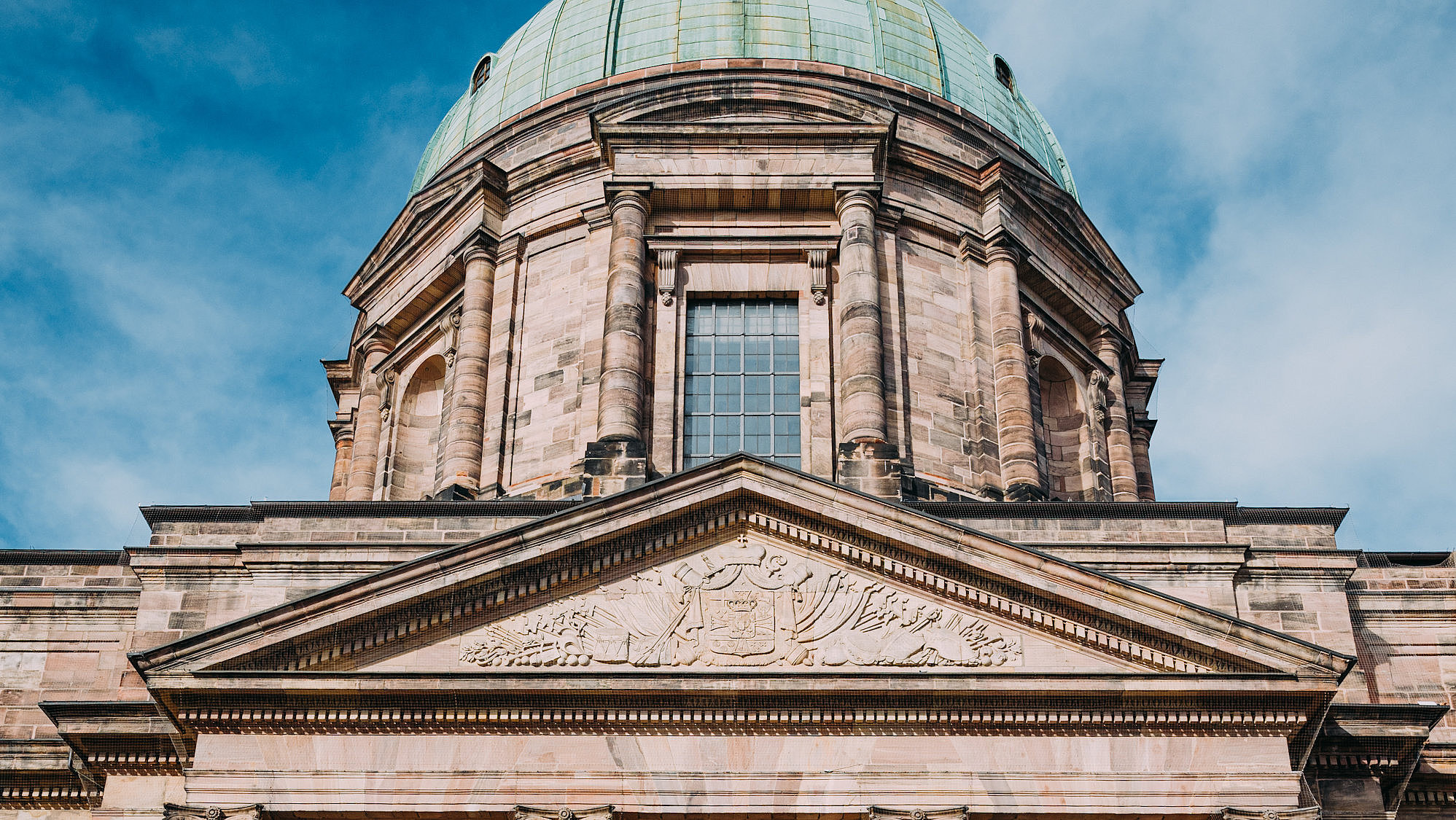
The Compound of the Teutonic Knights
Nuremberg's Beginning
Past the Weißer Turm and opposite the pedestrian zone, you’ll reach the former site of the Order of Teutonic Knights. If you look towards the Spittlertor Tower, you’ll see St. Elisabeth with its large, round dome on the right side and St. James’s Church on the left.
You’re now standing on the pilgrimage Way of St. James!
That’s why there is a pilgrim center in the foyer of St. James’s Church. Countless pilgrim have stopped here and anyone interested in the topic is welcome! If you are curious about the subject of pilgrimage, this center will give you a good introduction.
Emperor Otto IV gave the Order of Teutonic Knights this land in 1209, including St. James and a royal manor. They began to build a hospital here. This was located where today St. Elisabeth and the police headquarters stand. In 1230, the Order took over care of the hospital of St. Elisabeth. From then until 1300, they purchased or received farms, mills, property and rights in Nuremberg and Franconia.
When the city wall was completed in 1452, the area, which had been outside the gates of the city, became part of it. In 1525 (with the Reformation), Nuremberg became Lutheran, and it was only in the chapel of the hospital – the precursor of St. Elisabeth – that Catholic mass was held. It was only the members of the order who were allowed to attend, other Catholics staying in the city, such as traders from Italy, were excluded.
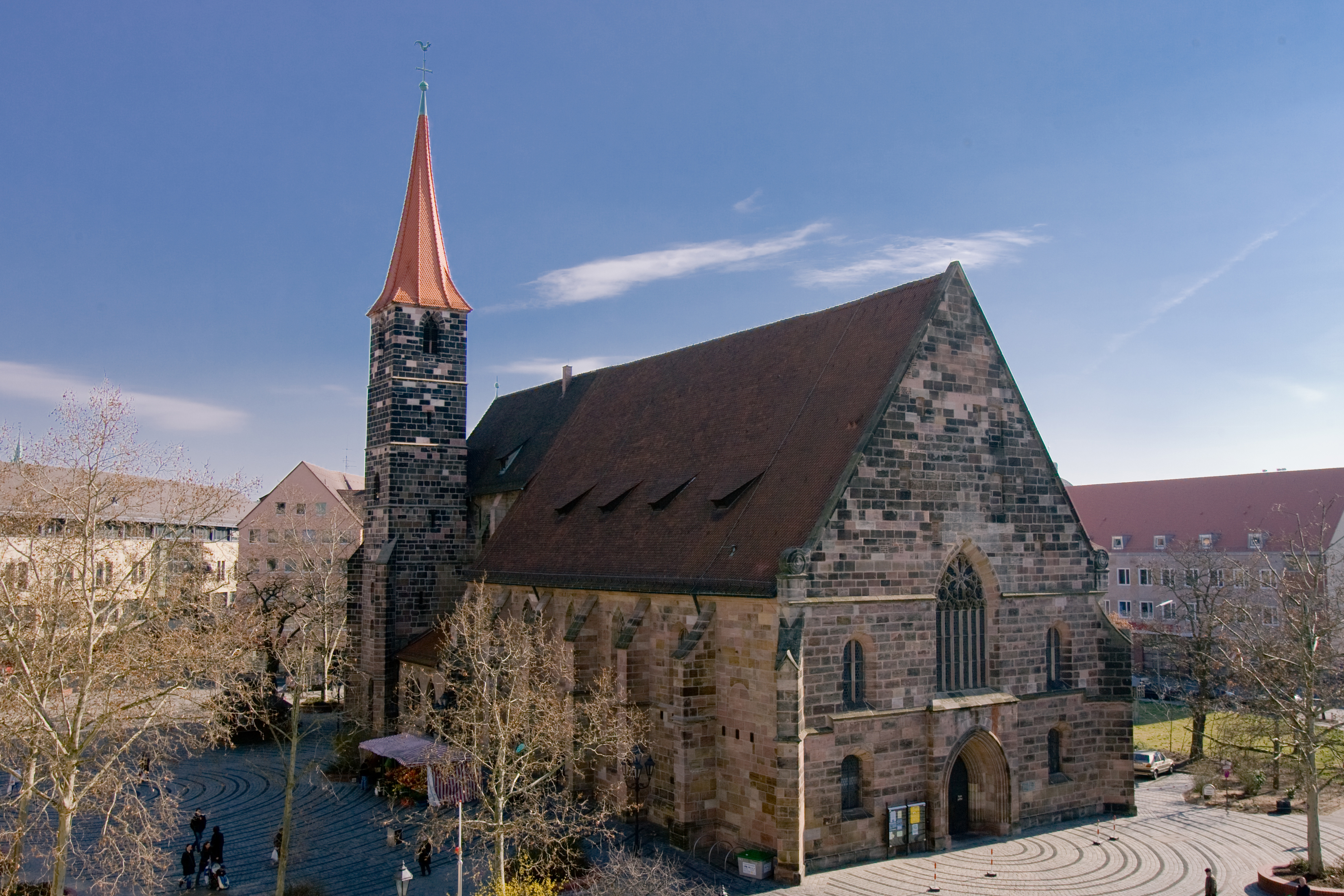
At that time, conflict between religions was the norm. The knights of the Teutonic Order came to St. James’s Church but were not allowed to set foot on Lutheran soil. The answer was a bridge which spanned from St. James to the hospital.
As Nuremberg became Bavarian in 1806, the whole area became the property of the kingdom of Bavaria. The hospital was quickly turned into a munition depot. This was later moved to Ingolstadt and one began to build a larger church.
Categories at St. James's Quarter
The Hexenhäusle
